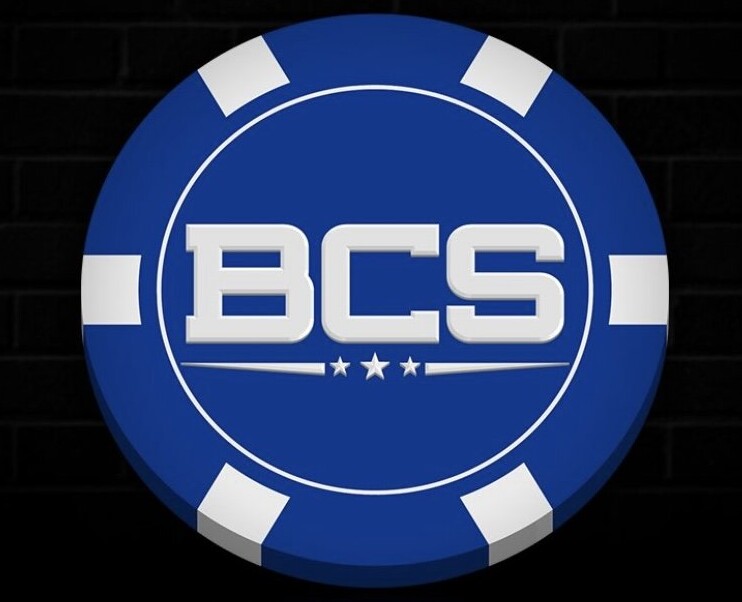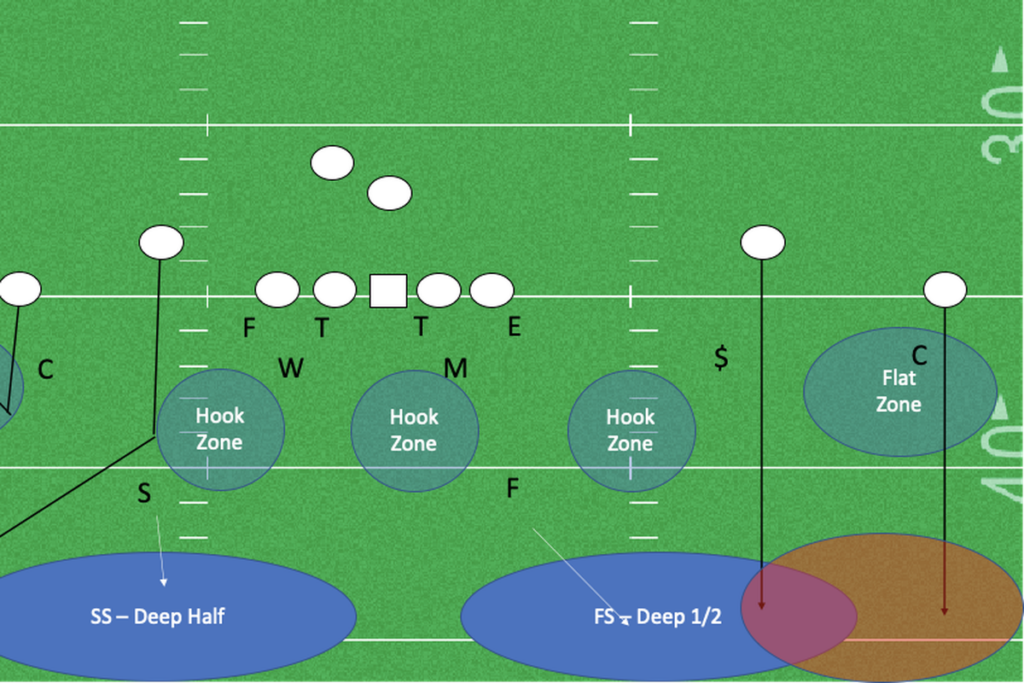Chiefs vs Colts week 3 2022 – 3rd and 7, ball on the 34 yard line 1st QTR. Chiefs run Smash concept to the boundary against Cover 2. Mahomes finds Travis Kelce for a big gain. 1st and goal Chiefs.
Eagles vs Cowboys week 16 2022 – 3rd and 6 on the 36 yard line 2nd QTR. Cowboys run Smash out of a 3×1 set against Cover 3. Dak finds Ceedee Lamb for the 36 yard Touchdown.
Missouri vs Ole Miss 2019 – Missouri runs a mirrored Smash concept against Cover 4. QB chooses the field side and hits the slot WR for a big gain.
It’s a common play used all over football from high school all the way up to the NFL. The reason why this play has been used and remixed for years and years is quite simple. It works.
But what is it?
In it’s most simple form a Smash concept is a combination of an underneath route and a corner route run at 10-12 yards.. The idea behind the route combination is to present a threat downfield and present a threat underneath. Whatever route the defense reacts to, leaves the other route open. Simply make the defense wrong. Smash can be run from 11 personnel (3 WR 1 TE) or 12 personnel (2 WR 2 TE), and can be utilized versus a variety of coverages.
Smash concept was designed to primarily be a zone coverage beater. Cover 2, Cover 4, any type of coverage where there is a flat defender and a deep defender can be susceptible to Smash concept. Against Cover 2 the Corner route is usually open, Against Cover 4 the Corner route is double covered leaving the underneath route available. Versus man coverage it’s the QB job to pick the best matchup because somewhere on the field you have a slot WR versus a LB or S.
The routes consist of a Corner route from the slot WR and a Smash route from the outside WR. Now this Smash route can be a few different routes. It can be a Whip route, a quick Out route or the most common route in the concept is the Hitch route. The idea is to attack the flats so any of these routes can achieve that goal. The plan is to put the flat defender in conflict, does he cover the underneath route or gain depth and take away the Corner route? It’s the QBs job to read that defender and make him pay for whatever decision he makes.
On the backside (other side of the field), a team can mirror the same concept if the coverage permits, or they can choose to put another defender in conflict. Usually on the backside of Smash would be the slot WR on the other side running a Post route or a Deep Over route. What this does is it puts the deep Safety into conflict. Does he get over top of the Corner route on the Smash side or does he protect the deep middle with the Post coming towards him? Again the QBs job is to read the defender and make him wrong.
If the Smash concept fails to get the offense the desired results, the fail safe is the checkdown to the RB. After scanning the field for any unaccounted for rushers, the RB releases out to make himself an option in the passing game. Against man coverage, the RB is to release out of the backfield directly towards the stacked LB. Step on his toes and break inside or outside depending on the LBs leverage. Against zone he simply finds the hole in the zone, sits down and shows the QB his numbers.
X’s and O’s Done…….Now the Billy and the Joe’s
The offensive line will not be addressed in this article, there isn’t any specific skill set that is essential to this type of concept being successful.
QB – From a QB standpoint, Smash is designed to be a 3 step drop. The progression is Corner, Underneath, Checkdown. Pre-snap the QB has to decide which side of the field he wants to work, then ID the technique and leverage of the defender. When throwing the Corner route the goal is to throw the WR flat out of his break. Drop the ball in front of the Safety and behind the flat defender. What’s required is quick decisions, pre and post snap recognition and arm talent to hit the hole shot. Scheme Fit: CJ Stroud HM: Hendon Hooker
Slot WR (Corner Route) – Ideally you want the slot WR to have some juice to get vertical. Seeing as how this play is a 3 step drop, you want your receiver to get from point A to point B in a hurry. Coming from the slot there will be no press coverage so the slot WR will need to explode off the line and get right into his route. Play strength is needed because there may be an OLB that wants to create collision along the way and knock the WR off his route. Technique demands that you stem the DB. Square up and run directly at the DB giving no indication of which way you will break. Once you’ve stepped on the DBs toes, plant your foot and break outside. Ball skills are needed because the throw may come on a rope or lofted with air under it depending on the defender’s leverage. Scheme Fit: Zay Flowers HM: Marvin Mims
Outside WR (Hitch/Whip/Out) – The outside WR will need to have some physicality to him to match the energy of an aggressive Cover 2 CB. At the same time he’ll need the route savvy to immediately sell vertical and get the DB to flip his hips. For any of these routes stop/start and short area quickness is necessary as well as the ability to gain yardage after the catch. Scheme Fit: Cedric Tillman HM: Quentin Johnston
RB (Checkdown) – Taking the checkdown in this play should not be considered a negative. Having the RB in space against a LB should be a favorable matchup for the offense. A lot of damage can be done with a simple checkdown. What’s required first and foremost is the ability to scan for blitz responsibility. After that the RB will need to ID what coverage he’s seeing and attack it accordingly. Lastly catch the ball and do some damage with the open space. Scheme Fit Jahmyr Gibbs HM: Eric Gray

